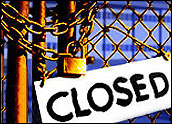
Despite the heavy losses realized by venture capital firms in the dot-com shakeout, analysts say that there is actually a great deal of capital available in the VC market for both startup and later-stage funding.
However, even with a renewed spark of optimism in the e-business sector, many observers agree that scars from failed e-commerce investments will inhibit VCs from pouring funds into the sector in the near future.
“There are some purely theoretical investments in biotech and optical technology, and VCs will still make those investments,” Venture Wire’s Ken Andersen said. “But they are going to make sure that the majority have clear prospects. As for e-commerce? Nothing. It is the forbidden word for VC.”
Andersen added that there are probably “some good back-end B2B firms that are not going to get funded” as a result of this e-commerce aversion. Instead, networking hardware businesses, in particular optical technology and wireless technology, will get the emphasis from the VCs.
“The business-to-business (B2B) sector has been hit hard, particularly companies like Commerce One,” Andersen said.
Venture capitalists are now deciding which tech companies in their portfolios are likely to reach profitability in a reasonable time — and which will have to close because their prospects are too dim.
“Most of these funds have huge amounts of capital that they are holding onto until there is more visibility in what the landscape looks like,” Tracy Lefteroff, global managing partner for private equity for technology at PricewaterhouseCoopers, told the E-Commerce Times.
Lessons of the Fall
In the process, many investors are taking time to review the lessons of the past year. While at one time the Internet appeared to be a promise land, in hindsight many of those promises were empty.
“For a while, raising money was easy,” Venrock Associates managing general partner Ray Rothrock told the E-Commerce Times. “There were no barriers to entry. There was plenty of money to be had and it was practically free. With little or no cost, you could raise money.”
According to Rothrock, five years ago a venture company could put up US$3 million or $5 million and purchase 40 percent of the company. As the high-tech hype grew, however, typical investments grew to $200 million — and got only 10 percent of the dot-com in return.
“We duped ourselves and thought there was plenty of money to go around,” Rothrock said. “The businesses were giving up less and raised gobs of money, so the cost of getting venture capital was a lot less.”
Frenzy Over
Rothrock noted that the unwritten rule that “you could not take a company public until profits were reached” was increasingly ignored as the dot-com bubble grew. Not anymore.
“No one is going to fund a half-baked company that has yet to show a profit anymore,” Rothrock said. “You don’t take a cake out of the oven and eat it before it is done.”
Most analysts agree that the dot-com frenzy blurred the types of factors traditionally used to analyze a company.
“I think a year ago there was a lot less due diligence being done,” Lefteroff said. “Capital was being invested because if you didn’t do it, the next firm down the road was going to. Today, venture capital firms are actually doing due diligence to determine if an investment is worth funding. A year ago, the pace of funding was so fast, it was more due to momentum than fundamentals.”
Can’t Go Home
Instead of looking at the size of a potential market and the time and money needed to reach profits for each dot-com idea that came along, many venture capitalists were looking for the big score.
“Kozmo typifies the lessons learned in the last year,” Andersen said. “It had a small business idea — delivering videos by bicycle in Manhattan, which works in Manhattan. But instead of making a profit in Manhattan, then expanding to other cities where the same idea would work, they expanded to cities where the same needs did not exist.”
Andersen did note that at the time, investors generally were not willing to settle for small returns.
“The lesson learned is that you need some singles and doubles in addition to the big score,” Andersen said. “Of course, that’s the nature of the business — the big scores are going to pay for the losses. Yet 18 months ago, everything looked like it was going to be a home run.”
No Exit?
According to most observers, the window is still shut on the initial public offering market, with the Loudcloud IPO largely viewed as an exception because of Netscape co-founder Marc Andreesen’s involvement. Therefore, according to Andersen, the only exit strategy for VCs is merger and acquisition.
“The market is so volatile that potential acquirers, such as Cisco, are having trouble getting their own businesses in order,” Andersen said. “So they are not out there looking to buy any companies. Venture capitalists are looking at their portfolios to see who can survive another year, and the rest get cut off.”
Companies looking for new funds must present “a very focused plan showing that there is a big market and a definable problem and a huge need for the product,” according to Andersen.
“That’s what VCs have looked at traditionally, but there was a misconception about it, as well as a get-rich-quick mentality,” Andersen said. “That has descended and now you have to have a clear path to profitability.” ![]()














































Social Media
See all Social Media